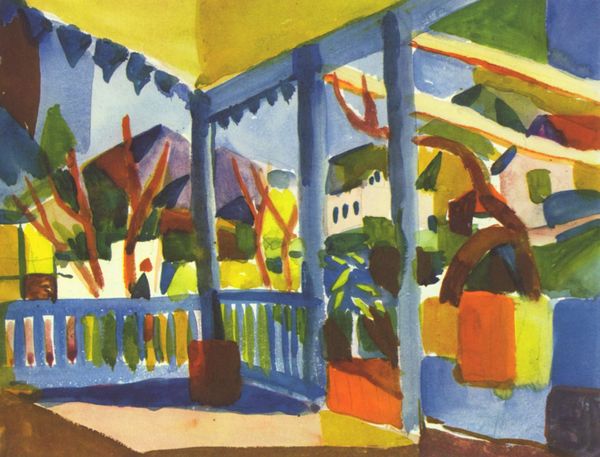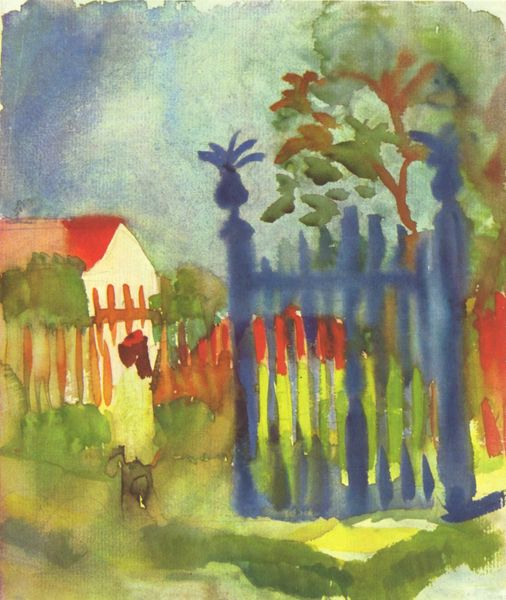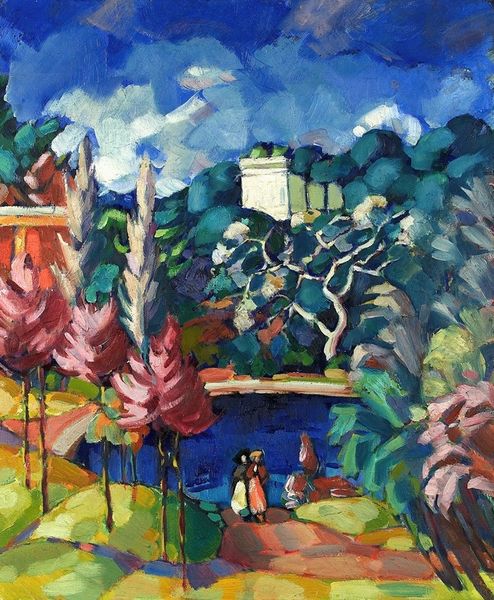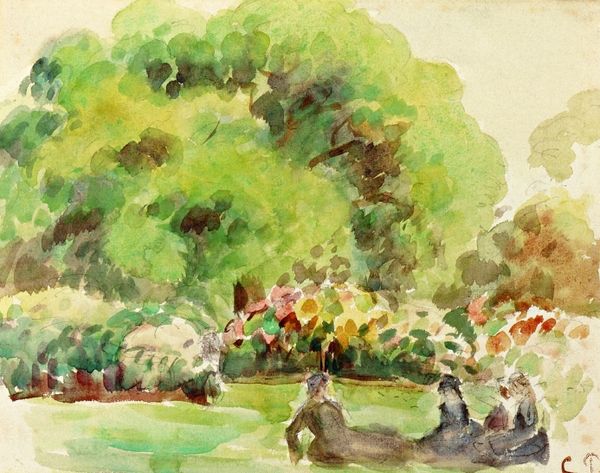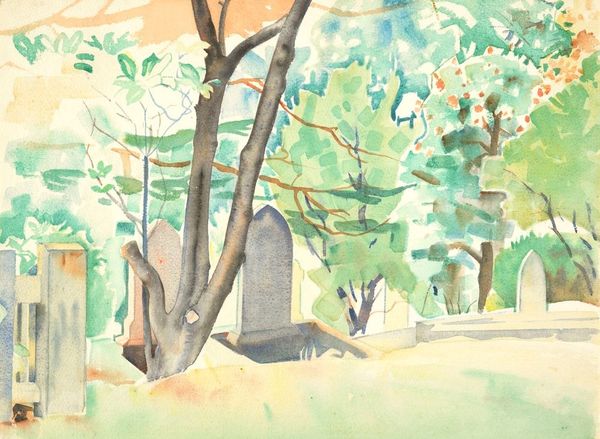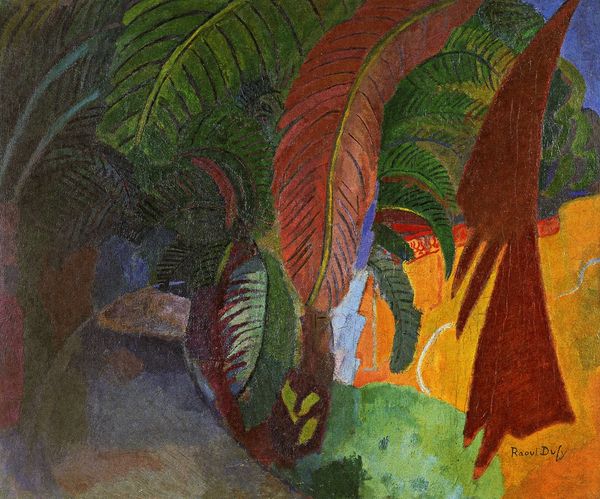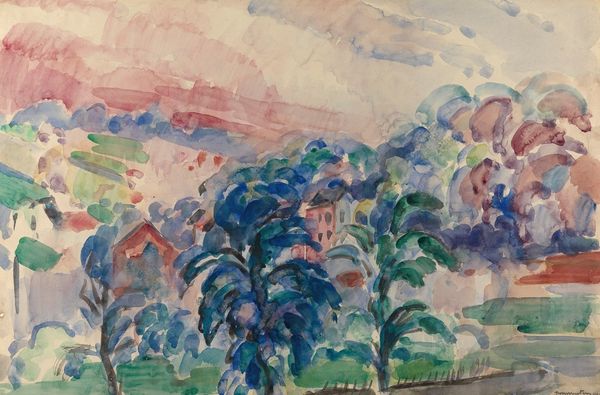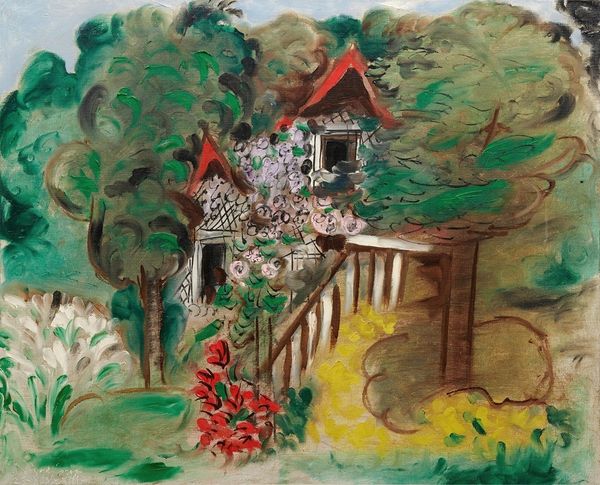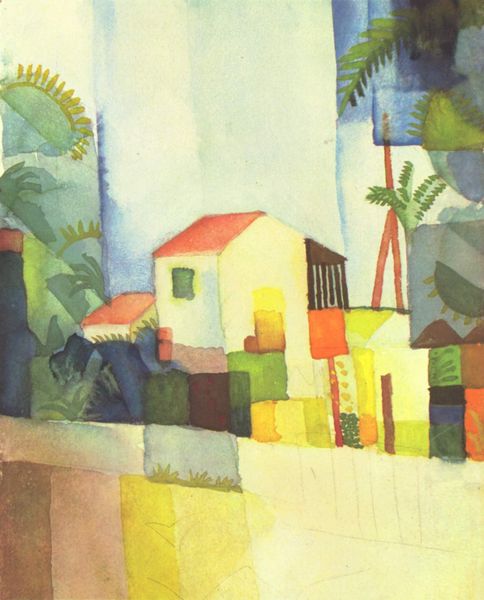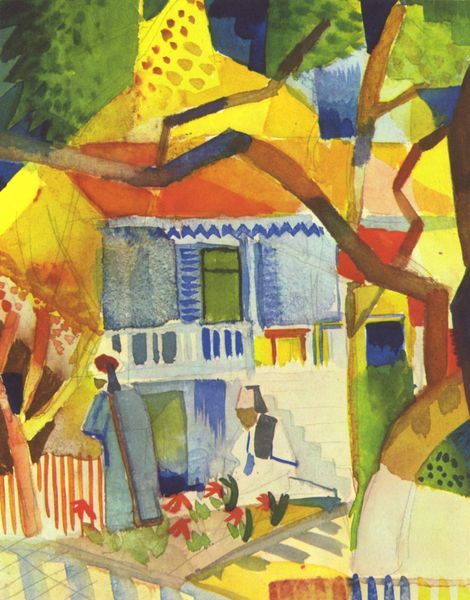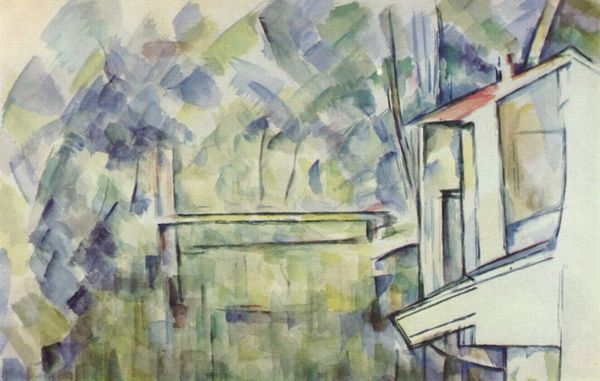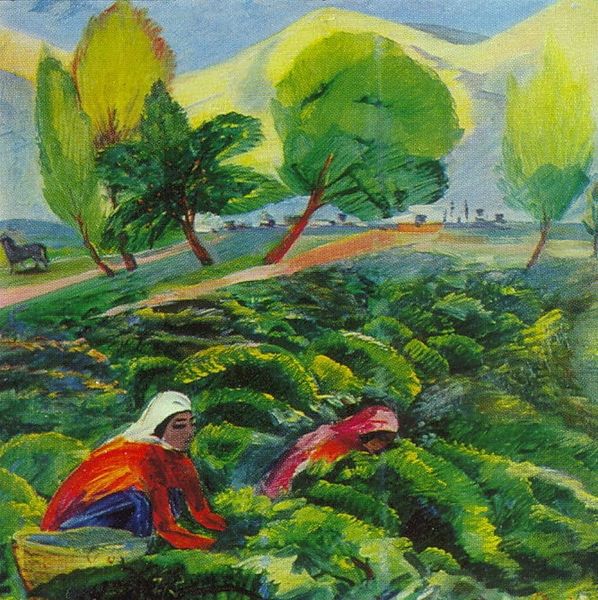
plein-air, watercolor
#
gouache
#
plein-air
#
landscape
#
figuration
#
watercolor
#
expressionism
#
orientalism
#
building
Dimensions: 22 x 28 cm
Copyright: Public domain
Editor: Here we have August Macke's "Tunis landscape with a sedentary Arabs," created in 1914 with watercolor and gouache. It strikes me as both peaceful and unsettling, the bright colors contrasting with a somewhat obscured figure. What do you see in this piece? Curator: I see a work deeply embedded within the complex history of Orientalism, painted during a period of intense colonial activity. While Macke was undoubtedly drawn to the light and color of Tunisia, we must consider the power dynamics inherent in a European artist depicting an Arab subject in their "native" landscape. How does the depiction of the 'sedentary Arab' contribute to or challenge existing stereotypes of the time? Editor: That's a powerful point. I hadn't really considered it beyond the aesthetic appeal. So, the 'exoticism' of the subject matter plays a significant role? Curator: Precisely. And let’s consider Macke’s expressionistic style, which, while visually arresting, further distances us from a realistic portrayal. The simplification of forms and the flattening of perspective could be interpreted as a way of othering the subject, reducing them to a picturesque element within the landscape. What is rendered as artistic license might also carry deeper implications related to the social perception of Arabs in European culture. Editor: It's strange, the title uses the singular Arabs, even though only one is seen. Maybe a focus on Arabs as a homogeneous group? Curator: Exactly. Can we then not question whether that is, or isn't, playing to racist and colonialist tropes that deny Arabs any individuality? Even Macke, intending no harm, could easily be complicit. How much does it change your opinion knowing this, and how should the work now be presented in the gallery? Editor: I now see that it's far more layered than I initially thought. It's not just a pretty landscape, but a complex representation of cultural exchange, artistic expression, and the shadows of colonialism. Thanks, it definitely changes my perspective on approaching historical works like this. Curator: Indeed. Analyzing through an intersectional lens, considering power, race, and representation, unlocks a richer, albeit more challenging, understanding.
Comments
No comments
Be the first to comment and join the conversation on the ultimate creative platform.

